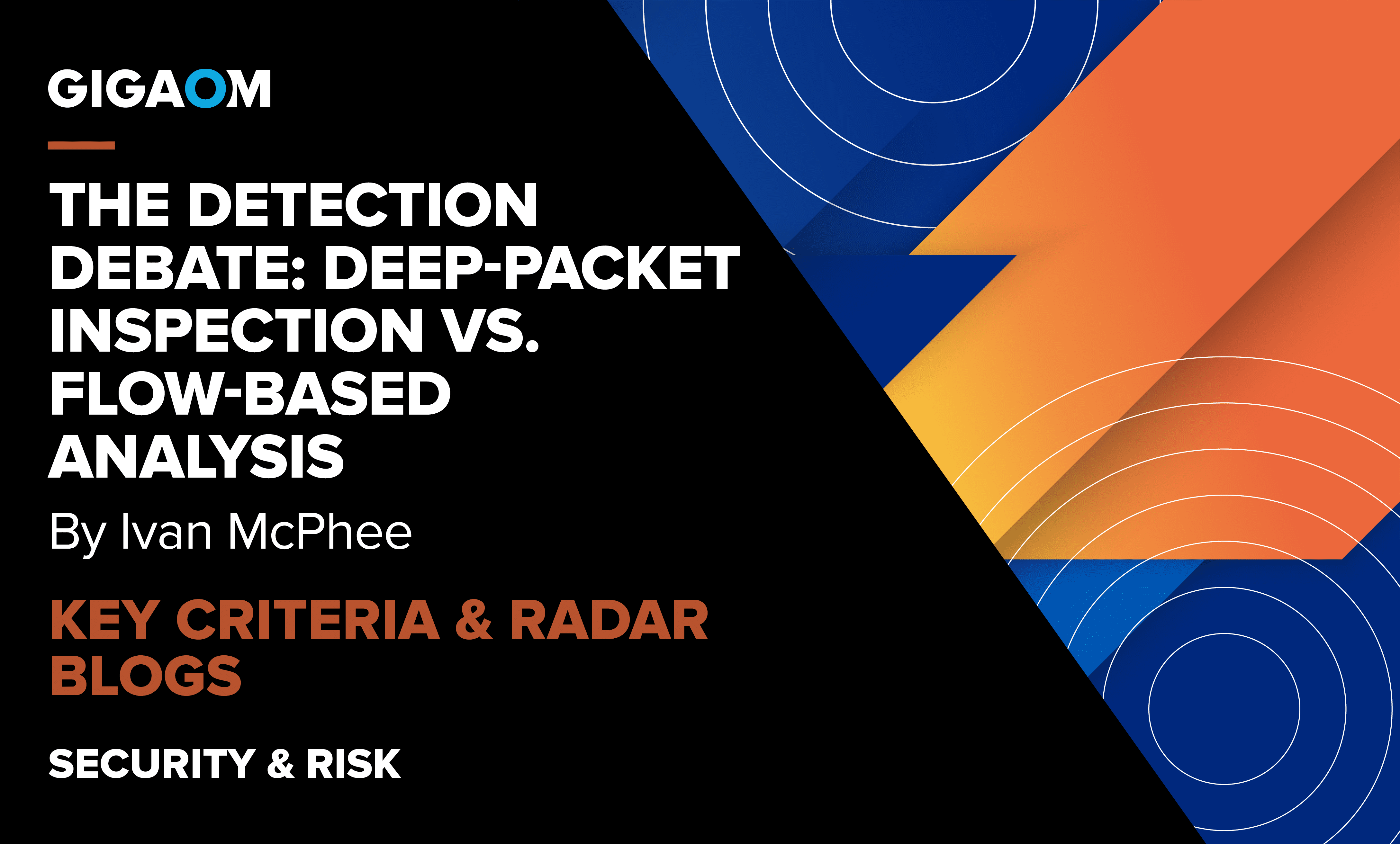
In the ever-evolving cyberthreat landscape, cybercriminals are deploying sophisticated methods to exploit network vulnerabilities while organizations constantly seek new ways to protect their networks. As traditional perimeter defenses become less effective against advanced threats, the deployment of network detection and response (NDR) solutions has risen in prominence as a crucial component of modern cybersecurity strategies.
NDR solutions leverage various techniques to provide an additional layer of security by continuously monitoring network traffic for malicious activities, enabling organizations to detect and respond to threats more quickly and effectively. Two of the most prominent techniques used to bolster an organization’s defense against cyber attacks are deep packet inspection and flow-based analysis, each with its own set of advantages and challenges.
Deep Packet Inspection
Deep packet inspection (DPI) captures network traffic by making a copy of data packets traversing the network through port mirroring, network taps, or dedicated DPI sensors strategically placed across the network to monitor incoming and outgoing traffic. The duplicated data stream is directed to the DPI tool, which reconstructs the packets to examine their contents in real time, including header information and payload, allowing for detailed analysis of the data and metadata from each device on the network.
Unlike basic packet filtering, which only checks the headers, this in-depth inspection capability enables DPI to detect anomalies, enforce policies, and ensure network security and compliance without interfering with live network traffic. By examining the contents of each packet that passes through a network, DPI can detect sophisticated attacks, such as advanced persistent threats (APTs), polymorphic malware, and zero-day exploits that may be missed by other security measures. If the data section is not encrypted, DPI can provide rich information for robust analysis of the monitored connection points.
Pros of DPI
- Detailed inspection: DPI provides an in-depth analysis of the data passing through the network, allowing for the precise detection of data exfiltration attempts and malicious payloads embedded in the traffic.
- Enhanced security: By examining packet contents, DPI can effectively detect known threats and malware signatures, enforce advanced security policies, block harmful content, and prevent data breaches.
- Regulatory compliance: Widely adopted and supported by many NDR vendors, DPI helps organizations comply with data protection regulations by monitoring sensitive information in transit.
Cons of DPI
- Resource intensive: DPI systems are computationally intensive and require significant processing power, which can impact network performance if not properly managed.
- Limited effectiveness on encrypted traffic: DPI cannot inspect the payload of encrypted packets, which limits its effectiveness as modern attackers increasingly use encryption.
- Privacy concerns: The detailed inspection of packet contents can raise privacy issues, necessitating stringent controls to protect user data. Moreover, some DPI systems decrypt traffic, which can introduce privacy and legal complexities.
Flow-Based Metadata Analysis
Developed to overcome the limitations of DPI, flow-based metadata analysis focuses on analyzing metadata associated with network flows rather than inspecting the content within the packets. Metadata can be captured directly by network devices or through third-party flow data providers, offering a broader view of network traffic patterns without delving into packet payloads. This technique provides a macroscopic view of network traffic, examining details such as source and destination IP addresses, port numbers, and protocol types.
Some flow-based NDR solutions only capture and analyze one to three percent of the network traffic, using a representative sample to generate a baseline of normal network behavior and identify deviations that may indicate malicious activity. This method is particularly useful in large and complex network environments where capturing and analyzing all traffic would be impractical and resource-intensive. Moreover, this approach helps maintain a balance between thorough monitoring and the overhead associated with data processing and storage.
Pros of Flow-Based Analysis
- Efficiency: Unlike DPI, flow-based analysis requires fewer resources, as it does not process the actual data within packets. This makes it more scalable and less likely to degrade network performance.
- Effectiveness with encrypted traffic: Since it does not require access to packet payloads, flow-based analysis can effectively monitor and analyze encrypted traffic by examining metadata, which remains accessible despite encryption.
- Scalability: Due to its lower computational demands, flow-based analysis can be easily scaled across large and complex networks.
Cons of Flow-Based Analysis
- Less granular data: While efficient, flow-based analysis provides less detailed information compared to DPI, which may result in less precise threat detection.
- Dependence on algorithms: Effective anomaly detection depends heavily on sophisticated algorithms to analyze the metadata and identify threats, which can be complex to develop and maintain.
- Adoption resistance: Adoption may be slower compared to traditional DPI-based solutions due to the lack of in-depth inspection capabilities.
Bridging the Gap
Recognizing the limitations and strengths of both DPI and flow-based analysis, NDR vendors are increasingly adopting a hybrid approach that integrates both techniques to provide comprehensive solutions. This hybrid approach ensures comprehensive network coverage, combining DPI’s detailed inspection capabilities of unencrypted traffic with the efficiency and scalability of flow-based analysis for general traffic monitoring, including encrypted data.
Moreover, vendors are incorporating advanced technologies such as artificial intelligence (AI) and machine learning (ML) to enhance the capabilities of both DPI and flow-based systems. By employing AI and ML algorithms, NDR solutions can analyze vast amounts of data, continuously learn and adapt to evolving threats, identify new and emerging attacks before signatures are available, and detect anomalies with greater accuracy. They can also help reduce false positives and negatives and automate response actions, which are crucial for maintaining network security in real time.
The Bottom Line
The debate between deep-packet inspection and flow-based analysis is not about which method is superior but rather about how each can be best utilized within an NDR framework to enhance network security. As cyberthreats continue to evolve, the integration of both techniques, supplemented by advanced technologies, offers the best strategy for robust network defense. This holistic approach not only maximizes the strengths of each method but also ensures that networks can adapt to the ever-changing landscape of cyberthreats. By combining DPI and flow-based analysis with AI and ML, organizations can significantly enhance their overall cybersecurity posture and better protect their networks and data from the ever-evolving threat landscape.
Next Steps
As the debate between deep-packet inspection and flow-based metadata analysis rages on, it’s essential to understand the strengths and limitations of each approach to ensure that you choose the right NDR solution for your specific needs.
To learn more, take a look at GigaOm’s NDR Key Criteria and Radar reports. These reports provide a comprehensive overview of the market, outline the criteria you’ll want to consider in a purchase decision, and evaluate how a number of vendors perform against those decision criteria.
If you’re not yet a GigaOm subscriber, sign up here.



